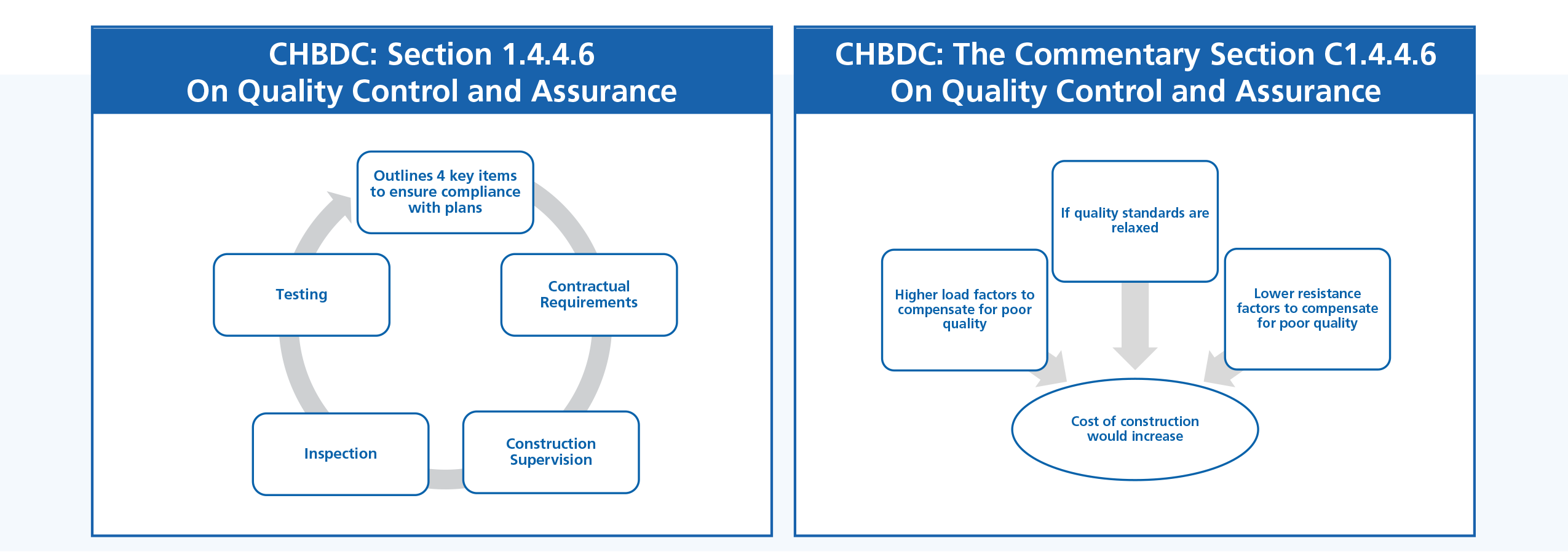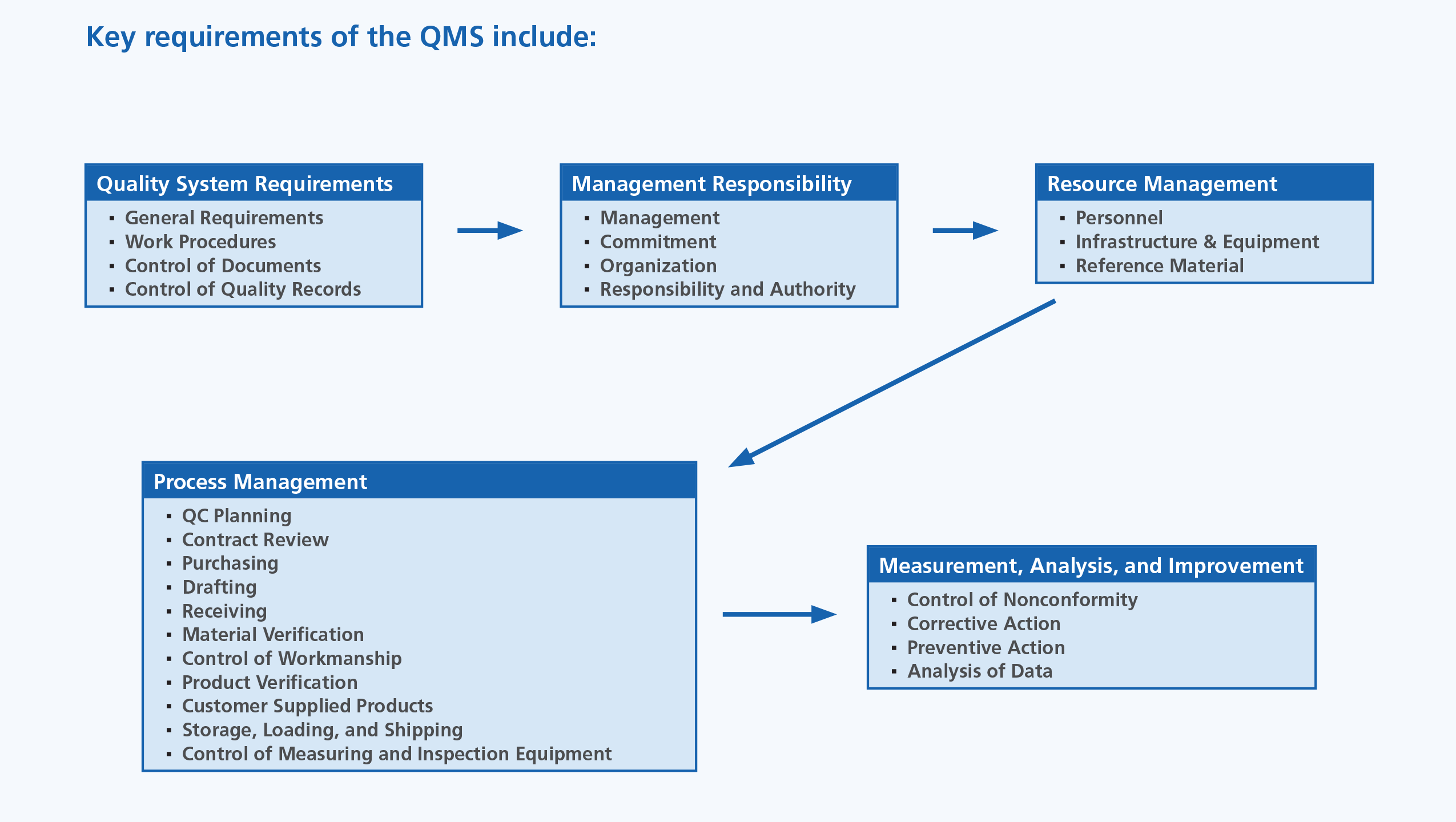
By Paul King, MS, P. Eng. VP Engineering, Rapid-Span Group and
Hellen Christodoulou, PH.D. Ing., B.C.L., LL.B., M.B.A. Quebec Region Manager, CISC
The CISC-ICCA Steel Bridge Certification Standard, 3rd Edition, for Complex Steel Bridges and Simple Steel Bridges is designed to assess the Fabricator’s Quality System.
Additionally, it provides a level of assurance that the company performing the fabrication processes has personnel in place to better abide to the contractual and regulatory requirements. This standard addresses the special processes and specific requirements of steel fabrication for highway and railroad bridge structures.
What are the Quality Requirements in the Bridge Code: CAN/CSA-S6?
In most jurisdictions in Canada, the Canadian Highway Bridge Design Code (CHBDC) applies for the design and construction of bridges.
- The provisions within CHBDC are:Intended to provide a uniform level of safety, durability and economy;
- To form an integral part of the approach to ensure construction quality is maintained;
- To ensure a mandatory requirement to provide “inspection and testing to ensure compliance with the plans”.

The provisions of the code have been formulated and calibrated on the assumption that high standards of construction will be adhered to. If this were not so, generally larger design loads and lower strengths would have to be used, or lower safety levels accepted.
High standards of construction require:
- That only competent and conscientious constructors be entrusted with the work;
- The plans include clear, comprehensive and practicable specifications;
- Testing and the supervision of construction are such, to guarantee compliance.
Traditional vs. Modern Construction Practice
Traditionally, many jurisdictions ensured compliance with the plans by maintaining a team of highly trained inspectors. Inspectors were employed or retained by the owner to monitor every stage of construction, as well as ensure the specified level of quality was upheld.
More recently, construction practice has shifted to require the constructor to take responsibility for adherence to quality. This means that quality control is no longer in the hands of the owner. As P3 and design-build delivery mechanisms have become more prevalent, all aspects of project delivery, including quality management, have become outside the direct control of the owner.
For pre-fabricated and plant produced products such as structural steel or precast concrete, a system must be in place to ensure only competent and conscientious constructors (including subcontractors) are entrusted with the work. In the absence of full time inspectors employed or retained by the owner, this can only be achieved by requiring plants to maintain a quality management system that is audited and certified by an independent and accredited organization.
Importance of the Quality Management System (QMS)
The certification body must verify that the Quality Management System (QMS) is specific to the product being produced. It must also be comprehensive enough to ensure all aspects of a fully functioning QMS are maintained.
For structural steel fabrication, an auditing and certifying system did not exist in the past. In 2010, the CISC-ICCA (with industry support) addressed this need with the introduction of a comprehensive certification program specific to steel bridge fabrication.
To obtain certification, fabricators must demonstrate they have a documented QMS. Additionally, they must provide evidence they have the knowledge, experience, equipment and personnel capable of fabricating steel bridges to the requirements of CHBDC and referenced standards W47.1 and W59.
In essence, the CISC-ICCA certification program provides assurance that only competent and conscientious constructors are involved in steel bridge fabrication.

Annex A10.1
Annex A10.1 is a normative (mandatory) part of CHBDC—the construction requirements are considered essential for structural safety and durability.
In keeping with the general requirements of Clause 1.4.4.6, Clause A10.1.1.2 requires fabricators to have a comprehensive QMS addressing the requirements of Section 10; including fracture control.
A10.1.1.2
Fabricators shall have a comprehensive, documented quality management system (QMS). The quality standard shall be an industry recognized certification program specific to steel bridge fabrication acceptable to the Regulatory Authority. The QMS shall address the requirements of Section 10 and shall include a documented fracture control plan. For single-span girder bridges consisting of un-spliced rolled sections or single span pedestrian bridges, certification requirements may be waived or modified by the Regulatory Authority.Note: A quality management system certified by the Canadian Institute of Steel Construction, in the category of steel bridges, is compliant with this requirement.
Some important considerations:
- CISC-ICCA Certification in the category of steel bridges is specifically mentioned as being compliant with the requirement;
- While the regulatory authority may accept other compliant certification programs, the CISC-ICCA certification is the only current program that fully addresses the requirements of CHBDC;
- CISC-ICCA certification does not supersede the mandatory requirement for steel fabricators to be certified by the Canadian Welding Bureau (CWB) to CSA 47.1;
- CISC-ICCA certification and certification to W47.1 go hand-in-hand. In fact, it is mandatory for CISC certified fabricators to be certified to W47.1 Division 1 or 2;
- Certification to W47.1 is specific only to welding. The certification requirements for W47.1 do not have mandatory requirements for a quality management program. W47.1 does not assess qualifications that are critical to bridge fabrication, such as fracture control (CHBDC Clause 10.23) and construction requirements (CHBDC Annex A10.1).
Taking just 2 examples that highlight why a mandatory certification would have mitigated, if not altogether, avoided issue related to project execution.
| WATERDALE BRIDGE IN EDMONTON (ALBERTA) | |
|---|---|
| The Original Cost | 155.0 M |
| Final Cost (excluding legal costs-estimated at 32M) | 158.5 M |
| Expected Completion Cost | 3.5 M |
| Expected Completion Date | September 2015 |
| Final Completion Date | September 2017 |
| Delay | 24 months |
Some of the critical issues of this project
- Delivery and fabrication delays of the steel arches;
- Defects and deficiencies upon arrival from abroad;
- Incorrectly sized and painted modules were delivered;
- Inspection confirmed steel did not meet Canadian standards;
- Defects required for local welding corrections and other repairs.
| JOHNSON BRIDGE IN VICTORIA (BRITISH COLUMBIA) | |
|---|---|
| The Original Cost | 63.0 M |
| Final Cost (excluding legal costs- estimated at 32M) | 103.0 M |
| Expected Completion Cost | 40.0 M |
| Expected Completion Date | January 2015 |
| Final Completion Date | January 2018 |
| Delay | 36 months |
Some of the critical issues of this project
- Delivery and fabrication delays of the steel;
- Defects and deficiencies upon arrival from abroad;
- Fitting issues and over 75 deficient welds;
- Material was rejected;
- Inspection confirmed steel did not meet Canadian standards;
- Defects required additional bolted plates and connections;
- Required new design for some sections;
- Local fabricators were consulted to offer opinions on remedial measures;
- Remedial measures required for additional bridge closures.
These are just two examples that were taken amongst many others, all of which have a consistent pattern of problems and issues that arise. These issues include:
- Late deliveries;
- Cost overruns;
- Legal pursuits;
- Defects and deficiencies;
- Non-conformities to Codes and Standards;
- Require intense inspection and testing;
- Local fabricators consulted to solve and remedy issues.
Lessons Learned
In a world of global supply chains, all levels of government are facing new procurement and construction challenges. As with many pre-fabricated products, steel bridge girders could come from anywhere in the world.
At this time, it can no longer be assumed that a fabricator will be familiar with Canadian bridge construction standards or have the facility, personnel and equipment capable of compliance with the contract requirements. Moreover, it can no longer be assumed that a fabricator will be concerned with his long-term reputation. Lastly, the competitive bidding process can put price above all other considerations.
- To comply with the intent and requirements of CHBDC: Section 1.4.4.6, on Quality Control and Assurance, inspection and testing are facilitated if fabrication is local;
- Certified fabricators having CISC-ICCA Steel Bridge Certification Standard offer the only current program that fully addresses the requirements of CHBDC;
- The National Building Code, the Handbook of Steel Construction and the CHBDC are formulated on the assumption of quality and to guarantee compliance. As is intended, certification would offer this guarantee;
- CHBDC recognizes the interdependence between the design requirements and construction quality in maintaining the targeted reliability and durability. The certification requirements for steel bridge fabricators are considered an essential part of the code requirements. While a regulatory authority is free to waive or modify parts of CHBDC as it sees fit, it does so at its own peril;
- At the same time, global procurement is becoming more prevalent and project delivery mechanisms are changing. Owners have diminishing control over the enforcement of quality standards. The potential for compromising safety and durability have increased proportionately;
- Recent contracts require the contractor to take the responsibility of ‘quality control’, as opposed to the owner. The engagement of a certified fabricator would give back some control to the owner as an underlying guarantee of the expected quality of work;
- Many quality issues can take years or even decades to become evident, which can lead to increased maintenance costs and shortened life cycles. The CISC has recognized the changing situation and has taken the lead in creating a world-class certification program for bridge fabricators specific to the needs of Canada.

For more info visit
Contact









